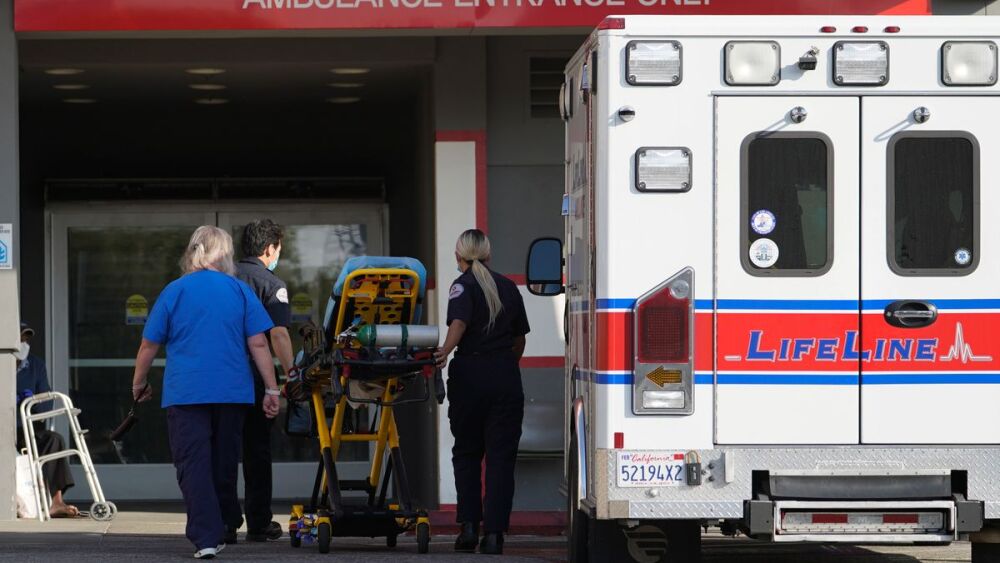This article was originally posted on Aug. 3, 2015. It has been updated with new information.
The tones sound at your station and as you proceed to the engine you hear the dispatcher’s voice over the loudspeaker: “Engine 3, Medic 7 priority two for a burn victim.”
After advising that you are en route you receive an update: “Engine 3, Medic 7, I show you responding to 768 West Palm Ct. The caller is reporting that a 58-year-old woman burned herself with some kind of liquid while cooking.”
You arrive on scene and once in the residence are directed to the downstairs bathroom next to the kitchen. Paula, your patient, is standing in the shower with the water running. She appears to be in a great deal of pain and is conscious and alert. Her breathing is rapid and shallow.
At this point think about the following questions:
- How much of the patient’s body is burned?
- When is a burn considered critical?
- After initial burn care, what are your next steps?
- Are there any concerns you have moving forward with the care of this patient?
Learn more
How burn patient treatment and destination are affected by severity
Use this guide to determine when to activate HEMS and transport to a level 1 burn center
Estimating the extent of burns
Paula appears to have suffered partial-thickness burns over a large portion of her lower body. Recall that the deeper the burn, the more anatomical structures are involved.
In addition to depth, the severity of a burn is characterized by the amount of tissue which is burned, as defined by the percent of total body surface area (TBSA) involved. Correctly estimating the size of a burn is important not only to determine how severely a patient is burned, but also as an important tool for guiding treatment.
The most commonly used method of estimating the extent of tissue burned is the Rule of Nines. The Rule of Nines relies on the concept that each major area of the body comprises a multiple of approximately 9% of the TBSA. For instance, in adults, each arm represents 9%, the front of the torso is 18%, the back is 18%, each leg is 18%, the head is 9% and the genitals are the remaining 1%.
Using the Rule of Nines guide, it is easy to divide the regions of the body into sections if not all of the area is burned. For example, if the upper half of the torso is burned, that represents 9% of TBSA. If the back of the head is burned, that is 4.5% of TBSA.
Since the Rule of Nines relies on the percentage of the body made up by different regions, the measurements do not apply as accurately to pediatric patients. Children have heads which are proportionately larger than adults with legs that are proportionately shorter. There are several available options for estimating burn percentages in children. Refer to your local protocols or your regional burn center to determine which tool you should use.
For smaller burns, the area taken up by the patient’s hand (including fingers) can be used as equivalent to 1% TBSA.
Your patient, Paula, was burned from the waist to knee on both legs and down her right buttock and the back of her right leg as well as her hand. Using the Rule of Nines, Paula has sustained burns on 20.5% of her TBSA:
- 9% for the right upper leg
- 4.5% for the front of the left upper leg
- 6% for the lower third of the front of her torso
- 1% for her hand
Prehospital treatment of burns
Aside from stopping the burning process and transporting to the appropriate destination, one of the most important treatment opportunities prehospital providers have with burn patients is to begin the process of fluid resuscitation.
With significant burns, patients experience large fluid shifts from the intravenous space to the intracellular space which can result in shock. As a basic provider, you should be aware of this potential fluid shift and consider an ALS intercept early, even if a burn patient’s presentation does not immediately appear complicated.
In order to determine how much fluid to administer, many systems have opted to use the Parkland Burn Formula. The formula determines how much fluid to give within the first 24 hours after the time of injury, with half the fluid being given in the first eight hours.
Another important BLS intervention is to employ non-pharmacological pain management while your ALS colleagues prepare and administer narcotic medication. Help your patient find a position of comfort. Avoid moving dressings, sheets, or cot straps across unprotected and injured skin. Keep the patient informed of the treatment plan and offer reassurance, as well as distraction from the pain.
High-risk burns
Certain types of burns are serious enough that patient should be directly transported, bypassing nearer hospitals, to a specialized, verified burn center. Refer to your local protocols to determine which receiving facility to transport particular patients to. Patients being transport to burn centers benefit from expert assessment, care and rehabilitation services. According to the American College of Surgeons Committee on Trauma, patients meeting the following criteria are recommended for treatment at a burn center:
- Partial-thickness burns of greater than 10% of the total body surface area
- Burns that involve the face, hands, feet, genitalia, perineum or major joints
- Third-degree (full-thickness) burns
- Electrical, chemical or inhalation burns
- Burns in patients with preexisting medical conditions that could complicate treatment
- Burns with trauma (though a determination should be made if the trauma or the burn poses the greatest risk)
- Burns in children
In addition, special care should be paid to patients with circumferential burns (burns which fully encircle a limb). Burned tissue is not as elastic as healthy tissue and as the body swells underneath and the overlying tissue does not stretch the patient may develop compartment syndrome.
Treatment for the patient burned while cooking
After determining the extent of Paula’s burns and assisting in packaging her for transport, you turn over care to the transporting ALS unit. The paramedic starts an IV and begins fluid resuscitation and administers pain medication. She calls to give a report to the receiving hospital and is asked to transport Paula directly to the burn center.













